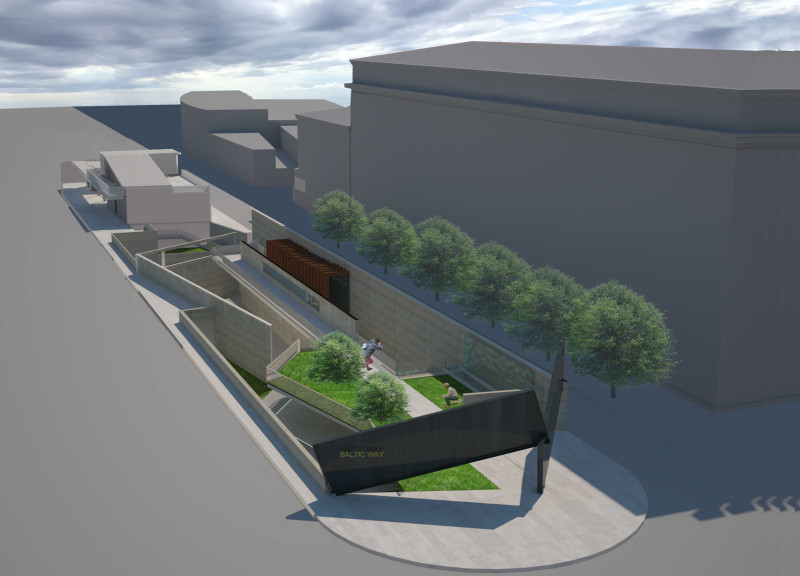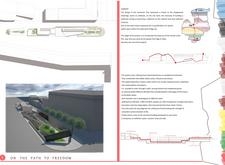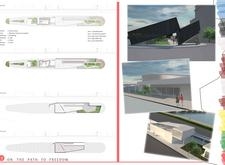5 key facts about this project
### Overview
"On the Path to Freedom" is a memorial located in Riga, Latvia, designed to honor the historical struggles and aspirations of the Baltic States: Latvia, Lithuania, and Estonia. The intention is to create a reflective space that acknowledges key historical events while fostering a sense of national identity and collective memory. The project integrates a narrative thread that guides visitors through significant moments of both hardship and resilience, unifying the shared experiences of these nations.
### Spatial Strategy and Experience
The memorial features three interlocked beams symbolizing the interconnectedness of the Baltic States. This design reflects a narrative path that serves as an experiential journey, emphasizing the human connection and the importance of relationships among these nations. The site is organized into thematic areas, each representing distinct historical moments, such as the struggle for independence and periods of occupation. The vertical progression through the memorial enhances the meditative experience, prompting visitors to engage with the meaningful history conveyed by the structure.
### Materiality and Landscape Integration
The choice of materials in the design underscores the memorial's historical significance and thematic elements. Concrete is utilized extensively for walls and pathways, representing resilience with a textured finish that connects to the past. Glass elements introduce natural light, symbolizing transparency and hope. Wood is incorporated into warmer spaces like the café and souvenir shop, promoting a welcoming atmosphere. Water features throughout the landscape embody themes of purity and rebirth, contributing to the site's reflective nature. Stone walls honor the identity of each state, framing the memorial and enhancing its enclosure.
The design also incorporates green spaces interspersed with symbolic walls, creating a harmonious relationship between the built environment and nature. Interactive exhibition areas allow for educational engagement with the history of the Baltic States, while the café and shop encourage community involvement, extending the space's role beyond that of a memorial to that of a vibrant social center.






















































